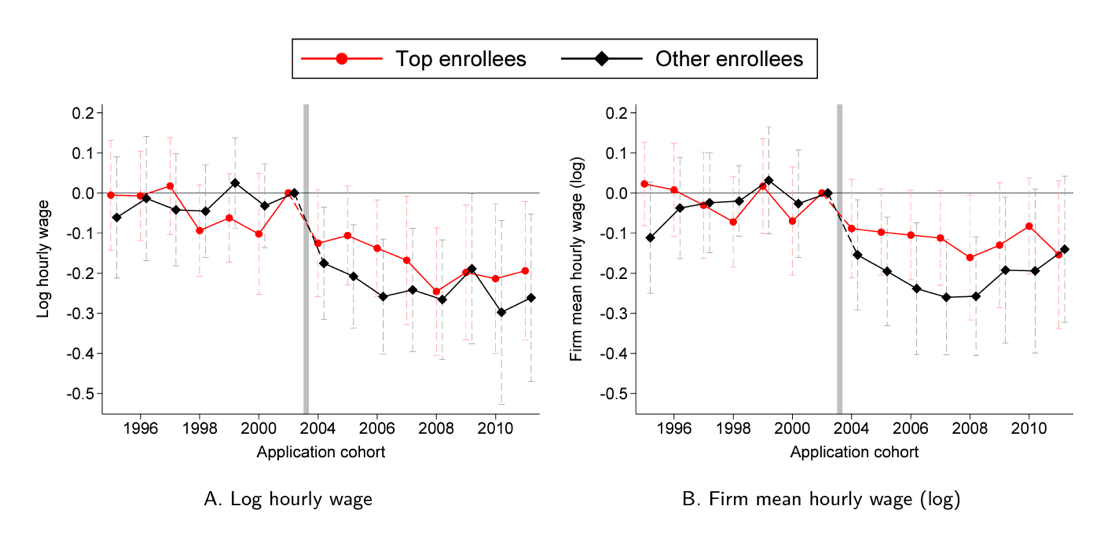Many elite universities face pressure to increase the diversity of their student body. A central question is whether these universities can do this without changing the benefits they offer to all their students. A recent IZA discussion paper by Cecilia Machado, Germán Reyes, and Evan Riehl, which is now forthcoming in the Journal of Labor Economics, sheds light on this question by studying the impacts of an affirmative action policy implemented by Rio de Janeiro State University (UERJ), one of Brazil’s elite universities.
UERJ was one of the first universities in the country to introduce large-scale affirmative action. It did so in the early 2000s by reserving almost half of its slots for racial minorities and students from low-income families.
The first question addressed by the study:
Did affirmative action benefit the students it was meant to help?
The answer is yes, at least initially. Students who got into UERJ because of affirmative action earned 14% more in their early jobs (see Figure 1, Panel C). This earnings benefit was partly because they got jobs at good firms associated with the alumni network of UERJ. But this benefit seemed to decrease as they moved further into their careers.
Figure 1. Regression discontinuity graphs for UERJ enrollment, earnings, and employment at alumni firms

The second key question addressed by the study:
Did affirmative action affect other UERJ students’ outcomes?
The answer here is also yes. The earnings of “top enrollees”—students who could gain admission whether or not affirmative action existed—decreased after the implementation of the policy (see Figure 2, Panel A). Two main reasons seem to explain this. First, they accumulated less human capital throughout college. Second, the value of the jobs associated with UERJ’s alumni network decreased after the introduction of the policy. This suggests that the change in student body composition from affirmative action reduced the learning and networking prospects of UERJ’s top students.
Figure 2. Event study estimates for individual and firm mean hourly wages 6–9 years applying to UERJ

What lesson can we learn from Brazil’s experience? Elite universities face a difficult decision. While they want to help students from different backgrounds, they also want to keep offering the same value to all their students. The results of the study can explain why many top universities have historically given preference to high-income and high-achieving students and why they remain hesitant to admit a large number of students from disadvantaged backgrounds.
